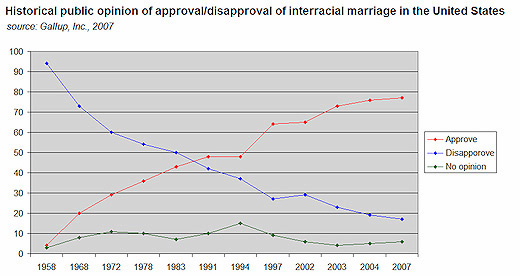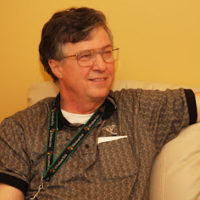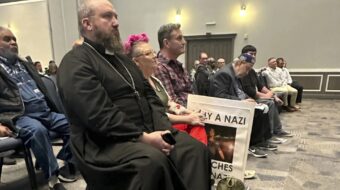
The killing of Trayvon Martin and the trial of George Zimmerman, and the public discourse in the aftermath of the verdict have awakened memories and emotions I had frankly put in the old news pile of my mind. It’s not that I thought unequal justice was a thing of the past for African Americans. The imprisonment, health, employment, and education chasms that persist between black and white are plain to see. Still, I was unprepared for the sharp divide in public opinion between black and white reflected in national polls after the “not guilty” verdict.
Confusion over Florida’s manslaughter statute is not surprising in the wake of the state’s “stand your ground” law. I could understand a jury’s reluctance to convict where there was no independent eyewitness to the actual shooting. Although much depends on the judge’s instructions, and the prosecutor’s competence.
But I also instantaneously felt the sharp pain of unequal justice. An unarmed black youth, on an innocent errand, in a place he was supposed to be, is stalked, and then killed, and the perpetrator is not held accountable for an avoidable loss of life. Avoidable? Since when is stalking someone not an act of aggression, not a crime? What African American mother can now permit her son to go to a 7-11 without a squad of witnesses? How many youth will logically conclude that Trayvon’s error was-he too was not armed?
What memories? Virginia in the 50s and early 60s where I grew up was a segregated society. During my childhood and adolescence, I never encountered a black person who was not a servant. Black workers from services like laundries, food delivery, landscaping, etc always seemed to have only a first name: “Jim”, “Willie”. White workers were Mr. Jones, Mr. Smith, etc. Even in the 1960s, features of the plantation culture, where all slaves had the master’s family name, or none, still persisted in my hometown.
My elementary school was all white. My middle school was all white. I almost went to a high school integrated shortly after the election of John F. Kennedy. But my upper middle-class neighborhood figured a way to get a brand new high school built. My social and athletic life after school was oriented around a country club that was not only all white, but all white and Protestant. No Jews. No Catholics. I remember cancelled tennis matches with other clubs that had acquired a non-white or Jewish member.
My home was not a place where racist “jokes” or other deliberate humiliations and intimidations pervasive in culture were directly heard. Nonetheless no protest against segregation was ever heard there; no move to separate from the vicious covenants and degradations that racism, and acceptance of it, injects into a human soul. There was silence. But the pervasive stench was everywhere: like a pulp mill right outside your home. How come, I asked, no one wanted to talk about it?
The question was my personal entry point into the civil rights movement. Because the silence was never complete. There was “the scratch and slide of the shoes leaving the ground, the shoes of the lynched men,” as poet Afaa Michael Weaver hears in the music of Thelonious Monk. Terror was never far away when the oppressed got “uppity.”
Needless to say, I had to take a long walk from the dark canopy of segregation, to really see, and join with, the light of common humanity, and of the divine, in every nation and race, and in every lifestyle.
The Zimmerman verdict was like a loud crack in a new canopy of a so-called “post racial” society of which the Rev. Dr. Martin Luther King Jr. dreamed 50 years ago, and which the popular election of an African American president seemed to validate. Yet here we are again. The discussions I hear now both on media and off have a horrific resonance with those I heard at church, of all places, after the torture-murder of Emmett Till, a 14 year old African American boy murdered in Mississippi after reportedly whistling at a white woman.
We cannot, we cannot go back to that time. But are we? Nobel Prize-winning economists cite the aggravation of inequalities on every dimension-not just race-as the chief cause of this depression, and the very slow recovery. Are the scars so deep that the infection of racism is now spreading, not receding? American society in 2013 is many times more diverse than that of 1964. We must engage, engage, and engage again-this infection can kill entire countries.
A white supremacist once told me that the outcome of integration would be “mud people,” an expression from Mein Kampf designating all “non-whites”. But he had a painful personal biography, and he confessed one night that he believed his white skin was “all that separates me from damnation.” Despite my aversion to his ideas, I had some pity, and love, for him. His affection for his mixed-blood (are we not all “mixed” blood?) granddaughter played a key role.
“Maybe it won’t be ‘mud,'” he said. “I always hated Jesse Jackson. But maybe he’s right. Maybe it is a rainbow.”
It’s easy to be discouraged, and lose hope. The explosions of discontent can lead one to easily conclude that human history tends more toward disorder and entropy than justice and greater perfection; that King was in error in predicting the latter.
But when I consider the chart showing the unmistakable pivot in positive U.S. attitudes toward mixed-race marriages that took off in the 60s and has never reversed course-the light of redemption shines through.
How can one explain it except as love working its way beneath and through all the contradictions of our racial history? Like the rainbow, it speaks a truth and promise that God reveals after a storm.












Comments